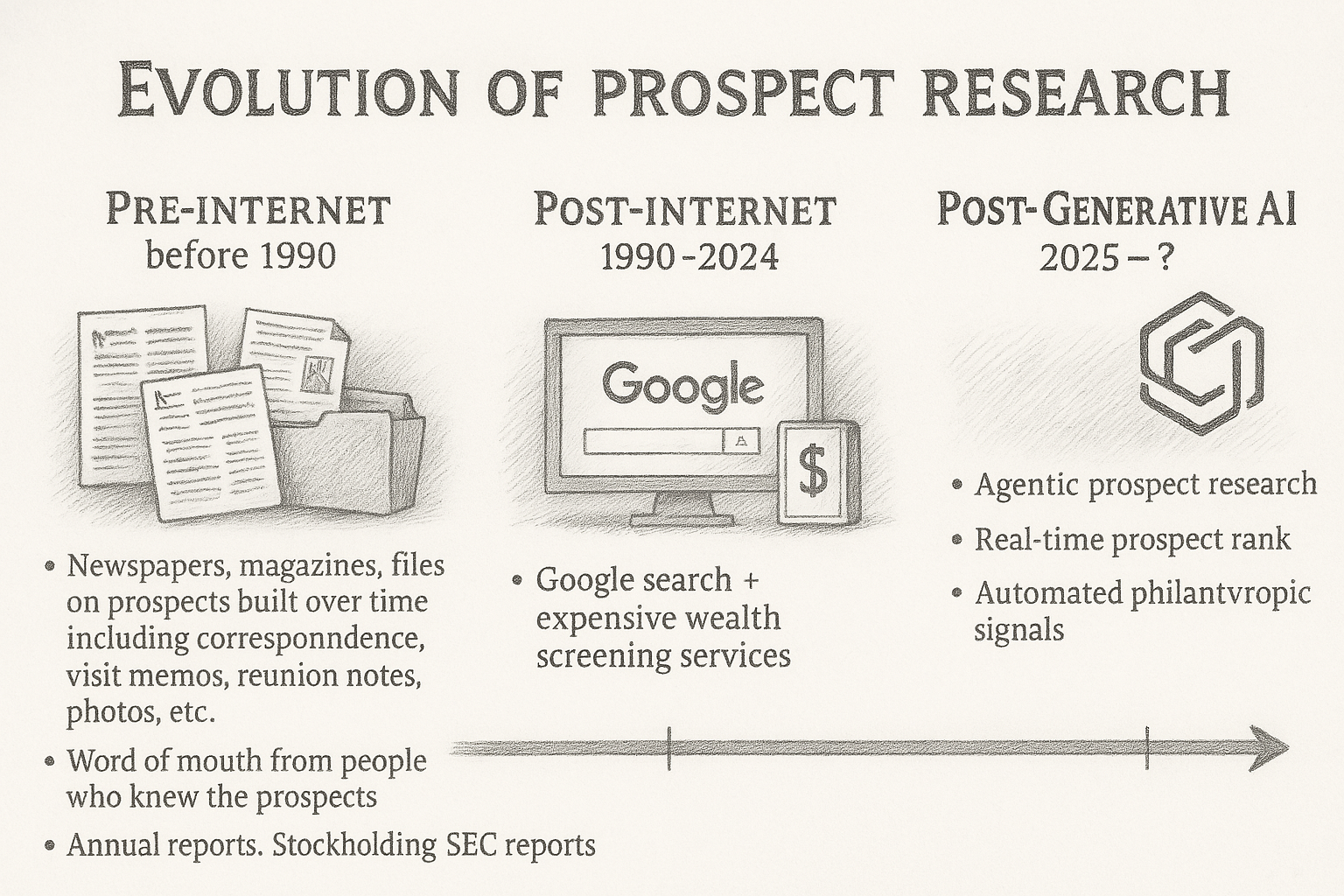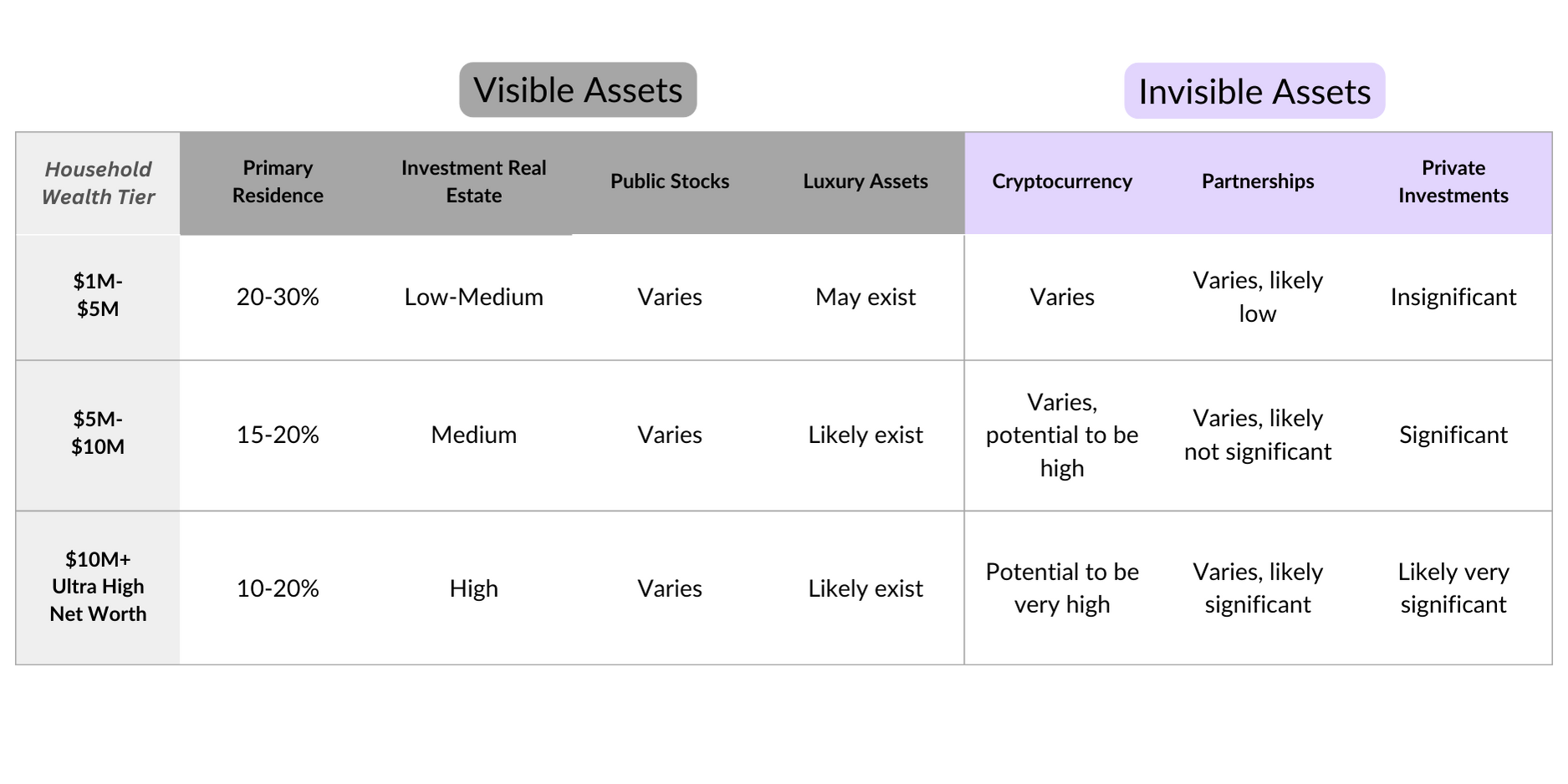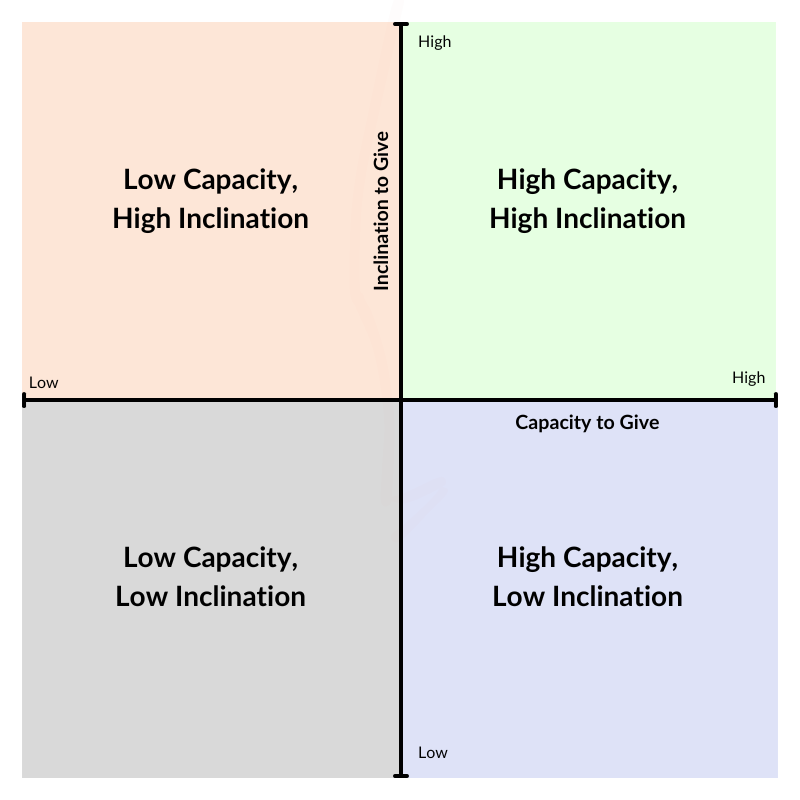Prospect Research · Screening
Generative AI in Advancement: A New Frontier for Prospect Research
By Simon Tumansky | May 20, 2025
The following article is sponsored by the AI Prospect Researcher (powered by ChalkBooks)
Prospect research has taken a huge leap forward over the last decade. What used to take hours of meticulous and manual work to prepare a prospect’s profile now takes just minutes with the help of generative artificial intelligence (AI).
The era of broad “wealth precision” and manual prospect research is fading. In its wake a new era of automation and capacity signal intelligence begins to take shape. The AI Prospect Researcher unlocks a new era of productivity for prospect research and advancement teams by surfacing deep capacity signals, analyzing trillions of data points in real time, creating complete profiles of the best prospects in minutes.
Quietly, the best advancement and prospect research teams are adopting generative AI for prospect research, creating significant major giving opportunities, while everyone gets left behind doing things the old way.
The Three Eras of Prospect Research

Pre-Internet (Before 1990): The Paper Trail Era
Before digital connectivity transformed our world, prospect research was a painstaking process.
Development teams relied on physical filing systems filled with newspaper clippings, magazines and handwritten notes that accumulated over years of careful collection. Personal correspondence, visit memos and reunion notes were meticulously preserved to build comprehensive donor profiles.
This era demanded patience, personal connections and a detective's persistence. Information was scarce, making each piece valuable but challenging to obtain.
Post-Internet (1990-2024): The Explosion of Digital Information
The internet fundamentally changed prospect research by creating an abundance of information.
Google searches replaced filing cabinets as the starting point for prospect discovery, democratizing access to basic data about potential donors allowed prospect research to begin to scale to more prospects.
While this era brought tremendous access to information, it created new challenges. Nonprofits faced pressure to buy specialized services from data aggregators that relied heavily on public information, spending a lot of time and money but often missing the mark for the wealthiest prospects whose assets were hidden.
Post-Generative AI (2025 and Beyond): The Capacity Signal Intelligence Era
We are now living through a paradigm shift where AI doesn't just gather information — it can help researchers identify meaningful signals of giving capacity. Agentic prospect research autonomously seeks and analyzes capacity indicators across vast datasets, quickly finding patterns to better support human prospect researchers.
This approach recognizes that for advancement professionals, the most valuable insights aren't necessarily about precise net worth calculations, but about meaningful signals that indicate both capacity and opportune timing for philanthropic engagement.
The Limitations of Traditional Wealth Screening
While detailed wealth screening can provide valuable insights, it's worth considering whether such extensive information is always necessary for identifying the most promising prospects.
The challenge with approaching prospect research from a "wealth precision" standpoint is that more affluent families typically structure assets in ways that aren't captured in public records — therefore making them invisible to traditional research methods.
Understanding How Wealth is Typically Distributed
Wealth is the total value of all assets owned by a family or individual, whether visible or invisible (fewer total liabilities).
Visible Assets: Visible assets are easily identified through research, including real estate or stock holdings (for senior leaders of public companies). This information is easy to find in tax records and filings by the Securities and Exchange Commission (SEC).
Invisible Assets: Invisible assets are more challenging to find — and this is often intentional. These assets are structured to maintain privacy or exist outside standard reporting systems. Cryptocurrency, art, collectibles and private equity holdings are examples of invisible assets.

Prospects generally fall into one of three wealth tiers. Each tier tends to allocate its assets differently, with wealthier individuals maintaining the highest percentage of invisible assets.
High Net Worth ($1M-$5M): High-net-worth individuals or households typically hold 20-30% of their total wealth in their primary residence. Investment properties typically make up 10% or more of total wealth. All real estate can comprise up to 45% of total wealth.
Very High Net Worth ($5M-$10M): For very high net worth individuals (VHNWIs) and households, the primary residence only comprises 15-20% of total wealth. VHNWIs tend to own more investment real estate. Private equity and venture capital investments also are an essential part of asset allocation for this tier of individuals or households.
Ultra High Net Worth ($10M+): Ultra high net worth individuals (UHNWIs) and households hold a larger percentage of their wealth in invisible assets. Real estate makes up just 10-20% of their total wealth within this tier. UHNWIs and families often make sizable private equity and venture investments and often own significant stakes in private businesses.
The New Playbook: Capacity Signal Intelligence
The evolution of available tools creates the possibility of approaching prospect research and development in a new way. This approach prioritizes information that signals prospect’s capacity ahead of all other information.
Both capacity and inclination matter, but we argue capacity is the primary indicator to look for when researching prospects. Increasing the inclination to give is, at its core, building relationships, which is the primary work of the development team.

Finding Capacity Signals
The Capacity Signal Intelligence playbook shows us that three primary indicators to focus on are professional roles, family capacity and liquidity events.
A prospect's current professional role and job history provide great insight into giving capacity. When screening prospects, leadership titles matter. Look for positions such as CEO, Founder, Partner, Owner, Investor, etc.
Signs of family giving capacity may be harder to find initially but also provide valuable information on the household’s giving capacity. When searching for signs of family capacity, look for ownership or partnership in a major business. Prospects related to an owner or majority shareholder often also have increased giving capacity.
Identifying liquidity events helps a researcher uncover when a prospect has or gains access to additional liquidity.
Adopting the Capacity Signal Intelligence Playbook in Your Non-Profit
Change towards Generative AI-centric prospect research can be scary but it is existential to remaining competitive in today’s increasingly challenging philanthropic environment. Why continue researching prospects manually or having to cobble together data from various systems manually if you don’t have to?
The AI Prospect Researcher unlocks a new era of productivity for prospect research by analyzing trillions of data points and proprietary data sources to create comprehensive, print-ready research reports in minutes, resulting in fewer calls from major gifts teams and higher quality prospect meetings.
See how the best advancement teams are saving hours on prospect research. Try AI Prospect Researcher today for free: www.chalkbooks.com/ai-prospect-researcher

Simon Tumansky
ChalkBooks
Simon Tumansky is the founder and CEO of ChalkBooks, driven by a passion for empowering prospect research teams through AI. Before starting ChalkBooks, Simon developed communication software for millions of knowledge workers. Set up a meeting to learn more.